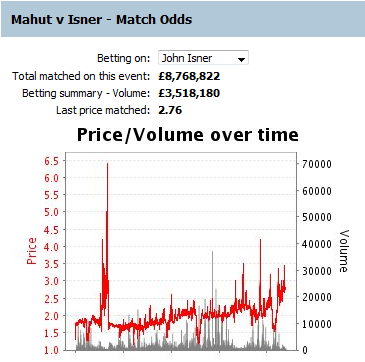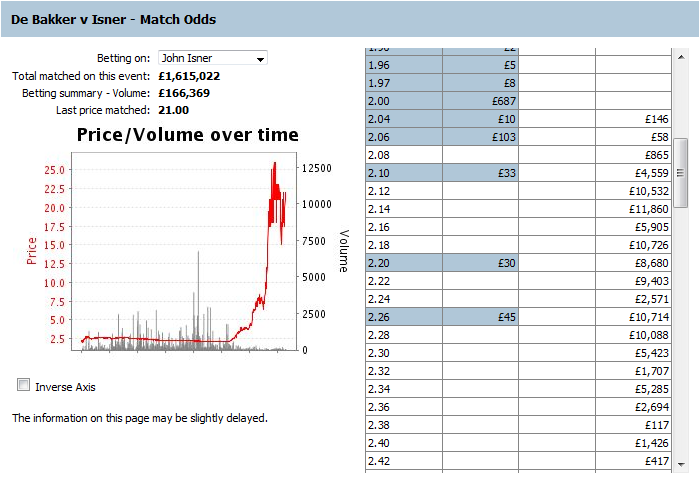Wimbledon Match That Changed the Rules
The perfect storm on grass
For decades Wimbledon’s “no-tie-break” final set was a purist’s dream and a trader’s nightmare-cum-bonanza. A player had to break serve and hold to win, so a contest could, in theory, continue indefinitely.
On 22 June 2010 that theory turned into reality when John Isner met Nicolas Mahut on Court 18.
The marathon that wouldn’t end
Play began at 18:13 on the Tuesday evening. Forty-eight hours, countless sun-cream applications and three sessions later, Isner finally closed it out on Thursday at 16:47. The final-set score? An absurd 70-68. The set alone out-lasted the previous record for an entire match.
Numbers that defy belief
- 183 total games
- 113 aces by Isner
- 11 hours 5 minutes on court
- Seven new Wimbledon and Grand-Slam records in one fell swoop
These figures weren’t just eye-watering for statisticians; they were a siren call for anyone poised on Betfair waiting for momentum to swing.
Spotting edge in real time
Because both men served so dominantly, the market yo-yoed neatly between them whenever one faced break point.
Early on it was almost textbook scalping: back the server at a higher price, lay a few ticks lower once the game was held, rinse and repeat.
But as fatigue set in, cracks began to show—first in Mahut’s body language, then in the odds. By the small hours of day three, weight of money was tilting decisively towards Isner.

When the rules had to catch up
Wimbledon’s hierarchy were quick to act. From 2019 a tie-break at 12-all curtailed these epics; from 2022 every Grand Slam adopted a 10-point breaker at 6-6 in the decider. For traders, that means the “infinite set” edge is gone—but the lesson in spotting structural inefficiencies endures.
The encore: a second slice of opportunity
Isner’s reward for his Herculean effort was a weary rematch with Thiemo de Bakker. Even after an extra day’s rest he looked shattered. The market smelled blood: odds drifted, and laying the American became a near-risk-free play for anyone who’d done their homework on recovery times. Sometimes the best trade arrives after the headline act.

Key takeaways for modern tennis traders
- Don’t just follow the score—read the body language. When stamina becomes a factor, the market often lags the physical reality.
- Rule changes matter. A tweak to scoring formats can wipe out or create entire strategies overnight.
- Opportunities cluster. Look for an immediate follow-up match where fatigue, injury or emotion may skew true ability.
Wimbledon 2010 proved that sometimes the best trades are forged in endurance, not speed. Store that in your playbook—the next “impossible” scenario is only a rain-delay away.
